It is difficult to disagree that maintaining a comfortable room temperature and good air exchange is the basis of a normal microclimate in a building for any purpose. Modern climatic technology and equipment for improving ventilation are capable of only create a comfortable atmosphere in the room for a few minutes - with the desired temperature and an acceptable threshold humidity.
However, simple installation of any air conditioner model you like can not always solve the problem of excessively high air temperature, right? Therefore, professional and competent design of building air conditioning systems is the first step before purchasing such equipment. Selecting the optimal equipment and installing it in the right place will allow you to cool or heat the air with the lowest energy consumption and take into account the needs of everyone in the room.
In this article, we will consider the main stages of creating a project for an effective air conditioning system, we will understand the calculations that need to be carried out when planning, and we will learn how to draw up the correct thermoregulation scheme air.
The content of the article:
- The need for air conditioning
- Why is it necessary to draw up a project?
- Types of air conditioning systems
- Calculations for drawing up a system plan
-
Design stages
- Stage # 1 - preparation of calculations and assignments
- Stage # 2 - selection of suitable equipment
- What is the risk of self-design?
- Conclusions and useful video on the topic
The need for air conditioning
System conditioning, like ventilation, plays a huge role in maintaining a comfortable atmosphere for the life and work of people. Too hot air seriously affects the well-being and performance of a person, so take care the microclimate of the room and the direction of movement of air masses is still at the stage of construction or repair building.
In addition to the impact on people, temperature and humidity are also reflected in the operation of equipment in offices or production shops. High temperatures increase the load on the equipment, which can cause damage to certain components.

High temperatures are not the only machine tools that suffer. Modern equipment, equipped with sophisticated electronics, is quite sensitive to temperature conditions
Maintaining the right temperature can also be the foundation of safety. Storing certain materials in rooms with excessively heated air is simply unacceptable. To reduce the likelihood of a fire, the air cooling system must work properly and fully compensate for the excess internal and external heat input.
Why is it necessary to draw up a project?
Compliance with the necessary standards and accurate calculation of the load on the air conditioning system saves users from a lot of problems. In the process of creating a plan, a huge number of factors are taken into account that can affect the efficiency of the equipment. Without taking into account these nuances, the functioning of the links of the air conditioning system may have an unacceptably low efficiency.
A competent approach to creating a project makes it possible to implement key tasks, which should include:
- maintaining optimal temperature and humidity in the building;
- selection of the most suitable climate and ventilation technology;
- possibility of multi-zone temperature setting;
- gentle operation of the equipment, which contributes to its durability;
- organization of the correct direction of air flows;
- extremely low power consumption to achieve specified temperature conditions, etc.
When designing, the aesthetic features of the air conditioner installation are additionally taken into account. The system that cools the air can be delicately incorporated into the interior if it is approached competently and with experience to integrate it into the room.
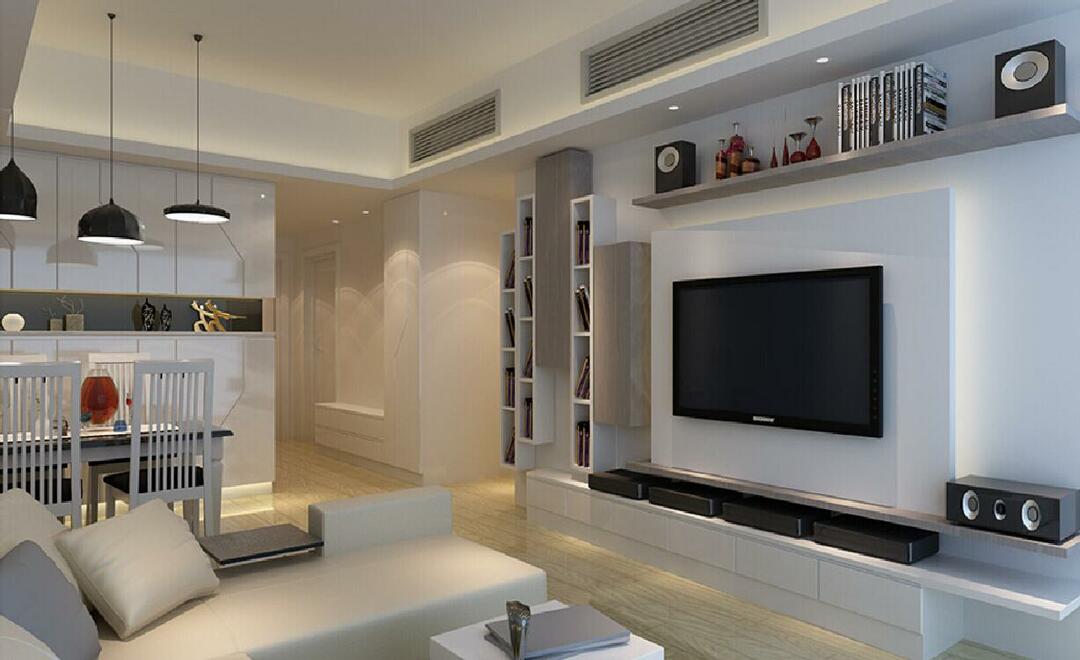
An aesthetically installed air conditioner can remain practically invisible to guests and absolutely not affect the overall idea of interior design
The planning phase of the air conditioning system should not be skipped, since it is a clear plan that allows you to develop an effective concept cooling any room or an entire building, prepare the necessary drawings and specific tasks for installation teams, electricians and others specialists.
Types of air conditioning systems
Calculations and specific features of the room affect the choice of air conditioning system. In each of them, certain models of air conditioners are used, which can be divided into three broad types: domestic, industrial, commercial.
The systems themselves are divided into the following types:
- multizone complexes;
- split and multisplit systems;
- central cooling;
- precision air conditioning;
- chiller-fan coil system;
- systems with duct or roof air conditioners, etc.
For domestic use, multi-zone are most often chosen, split systems and multisplit systems. The main difference between such complexes is the number of internal equipment units.
Split system implies the presence of one indoor cooling unit, multisplit - five, and at multizone complex integrated from 10 to 15 links, which function thanks to the extremely powerful outdoor unit.
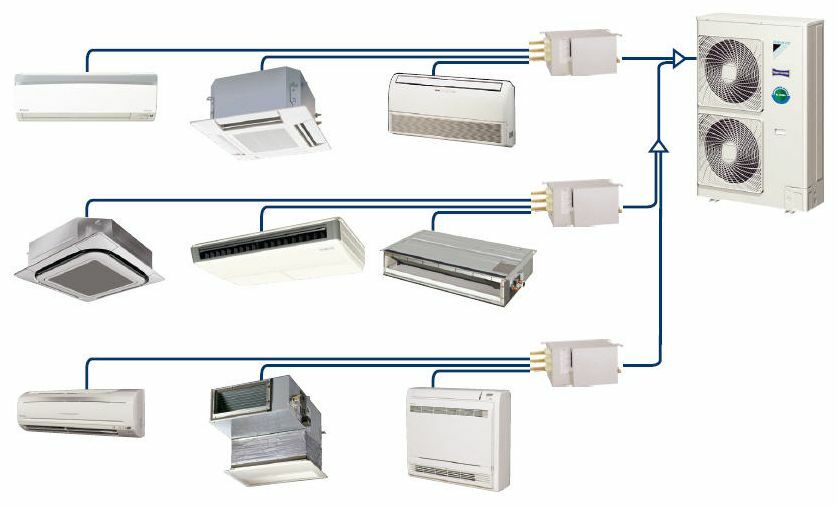
A multi-zone air conditioning system is one of the most effective ways to cool the air. in rooms for various purposes due to the independent operation of indoor units and the power of the external knot
Drawing up a plan for an efficient air conditioning system is based on the calculation of the warm air balance, while taking into account all the key factors that affect the microclimate inside building.
The design is also subject to regulatory documents, takes into account sanitary, architectural, fire safety and other requirements.
Calculations for drawing up a system plan
In order to select the optimal power of the working outdoor unit and calculate the number of indoor units, the internal and external heat load on the building is taken into account.
Internal heat loads are always positive and represent heat generation from people living in the house, production of thermal energy from household appliances and sources lighting. In commercial or office premises, heat from energy-intensive equipment is added to such a load on the air conditioning system, in buildings for industrial purposes - heat transfer from hot liquids, equipment, as well as heat generated during chemical reactions.
External heat loads can have both negative and positive characteristics. Therefore, the external load is heat gain or heat loss.

The conductors of heat loss and heat gain are clearly shown in the diagram above. Red arrows indicate heat loss flows, blue - cold penetration into the building.
The sources of such a heat load are:
- sunlight penetrating through double-glazed windows;
- heat or cold, which are transported by walls, window structures, floor, roof and ceiling;
- heat loss and heat gain from supply ventilation.
Quantitative indicators of the same type of external heat load can vary from positive to negative loads during the day, for example, with a large amplitude of the difference between day and night air temperatures, and from season to the season. For example, in summer, the difference in temperature outside and indoors is negligible, so heat penetrates the building more easily. In winter, the reverse process takes place, in which heat leaves the structure faster.
The calculation of the heat-air balance allows you to choose the right equipment and plan a suitable place for installing the air conditioner.
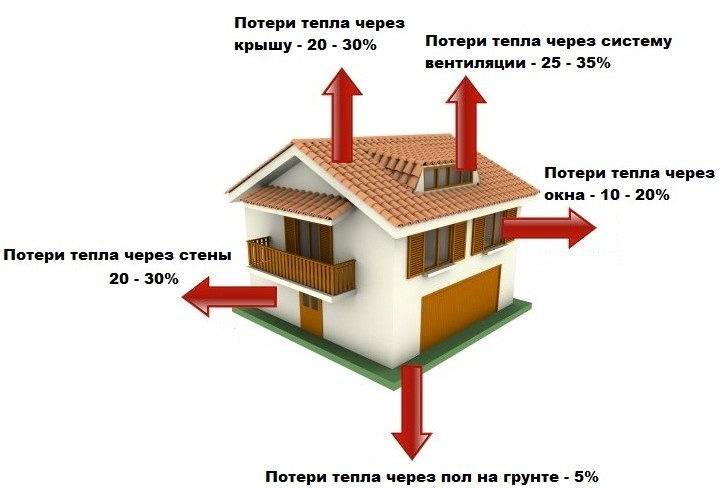
Modern air conditioners are capable of perceptibly warming up the air, if necessary. Therefore, when designing an air conditioning system, it is important to take into account the main areas where high heat losses are observed.
When calculating, the key factors that affect the supply and loss of heat must be taken into account:
- climatic features of the area;
- materials from which the building is built;
- wall thickness and the presence of insulation;
- the number of chambers in the glass unit and the overall energy efficiency of the window structure;
- orientation of the building to the cardinal points;
- availability of equipment and technology that produces heat in the process of work;
- the number of people living or regularly staying in the room;
- the number of rooms in an apartment or house, etc.
Based on this, it is not difficult to understand that the most accurate and competent approach to the plan of the future air conditioning system can only an experienced professional, as in the process of preparing a project, you need to provide for too many specific nuances.
Design stages
Drawing up a plan for the necessary work is carried out in two sequential stages, including the preparation of all the necessary calculations, estimates, technical specifications for specialists in related fields and the choice of a suitable model range equipment.
Stage # 1 - preparation of calculations and assignments
Preparation consists in familiarization with the building, its location, construction features and other factors.
Experts draw up a feasibility study, on the basis of which the type of air conditioning system is approximately selected. The latter is described in a simplified manner.
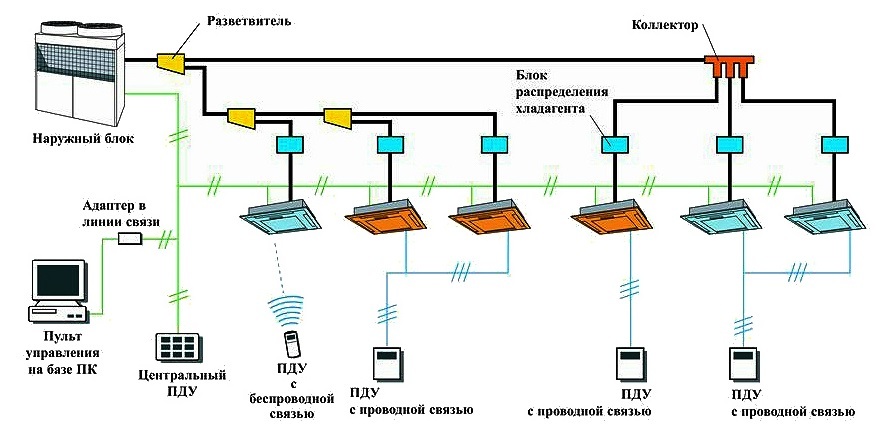
The simplified diagram shows the key links of the air conditioning system, refrigerant distribution units and main climate control units
The master offers potentially effective equipment that meets the needs of the premises in terms of basic characteristics:
- power;
- cooling, heat and air capacity.
After that, an estimate of future work is drawn up. If the feasibility study project satisfies the owner of the building or apartment, the preparatory phase goes into the working phase.
Stage # 2 - selection of suitable equipment
At this stage, the design is based on accurate calculations that take into account the internal and external heat load, thermal characteristics of the facility. Calculations are carried out individually for each room, after which the excess heat in each zone is precisely known. On the basis of these data, the equipment necessary to compensate for thermal loads is selected.
After the selection of equipment, the design of the installation sites for air conditioners begins, a wiring diagram of the air ducts is provided, a technical work plan is prepared for the installation team, electricians.
All prepared materials are transferred to the customer and the supplier of the climatic equipment. After installation, it is advisable to carry out commissioning, which will help to adjust the functioning of the equipment.
What is the risk of self-design?
Without proper experience and knowledge, it is quite difficult to personally draft an air conditioning complex.
If you do not take into account at least one factor, for example, the orientation of the apartment to the north side or the presence double-glazed windows with low heat preservation efficiency, the entire air conditioning system will work ineffective.
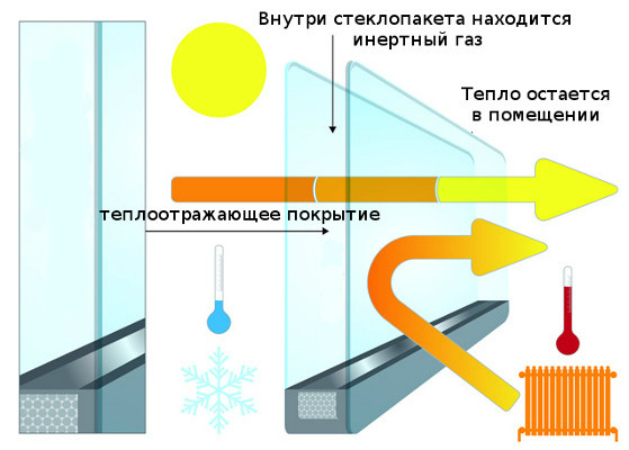
The energy saving indicators of metal-plastic windows depend on many factors: the number of chambers, the presence of special spraying, etc. Therefore, it is rather difficult to independently calculate heat loss and heat gain.
Additionally, climatic equipment can be subjected to stronger loads, since in the process air conditioning equipment will have to constantly compensate for the heat unaccounted for by the designer receipts.
In general, any flaw in the compiled project can lead to serious problems:
- unjustified operation of the air conditioner in one room, while most of the household is in other rooms;
- overspending electricity, which is spent on suppression of unaccounted heat from lighting or equipment;
- impossibility of zonal temperature control;
- buying too powerful or low-performing equipment;
- rapid wear or breakdown split system nodes due to excess load, etc.
Therefore, drawing up an air conditioning scheme even for a small home or office should be entrusted to professionals.
Saving money on design can result in unreasonable costs during the operation of the equipment.
Conclusions and useful video on the topic
Five types of the most common air conditioning systems, their features, differences and capabilities are described in detail by the lecturer from the following video:
The basic design of air conditioning systems and recommendations for choosing the appropriate type are given by the ventilation and air conditioning engineer:
A professional approach to building air conditioning allows you to ensure the required temperature, cleanliness, humidity and air mobility, on which the well-being and performance of people depends, the functioning of complex equipment, the safety of furniture or certain materials.
The design process is quite complex and time-consuming, so it must be approached extremely responsibly. That is why you should not do planning on your own, but choose in advance a team of professionals who have experience, a positive reputation and admission to carrying out such calculations.
Do you have any questions about the design of air conditioning systems? Ask our experts and other site visitors in the feedback block. Leave your comments, share your experience, take part in the discussion.


